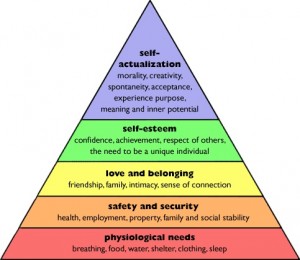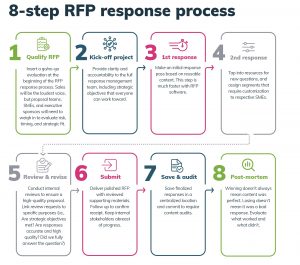— November 11, 2017

stevepb / Pixabay
Most businesses don’t have steady revenue all year round. There are months where sales are high and months where you’ll barely scrape by. There are also sudden expenses and late payments from customers that may threaten to do you in. But for all your business cash flow problems, there’s a possible solution.
Getting to the Root Cause of Your Businesses Cash Flow Problems
Before you can implement a sound strategy for fixing your cash flow crisis, you have to understand what’s happening at a foundational level. In other words, what’s causing the problem? While there are hundreds of possible causes, almost every cash flow issue can be tied to one of the following three categories:
-
Sales Issues
Let’s begin with the most common culprit: sales problems. When you aren’t selling enough, you’re naturally going to struggle with cash flow. The key is to understand why you aren’t selling enough.
Sales issues are generally tied to one of three problems: (1) the sales price is too high, (2) the marketplace isn’t receptive to the product, or (3) you’re doing a poor job of reaching the right audience with your sales and marketing initiatives.
In many cases, you’ll find that your sales problems are actually tied to multiple factors. The sooner you dig in and find out what’s causing your lack of sales, the faster you can pursue a solution.
-
Inflated Expenses
If your top line number is healthy, you clearly don’t have a sales problem. The next thing you should look at is your expense sheet. If revenues are high and cash flow is tight, it means something is happening after the sale. Your money is going somewhere and your expense sheet will shed some light on what’s going on.
It’s easy to ignore your expenses when everything is going fine and cash flow is positive, but as soon as your budget gets a little tighter, you no longer have the luxury of turning a blind eye to what’s going on.
-
Poor Collection Efforts
It’s entirely possible that your sales numbers are healthy and expenses are low, yet you’re still suffering through cash flow related problems. If this is the case, you should take a look at your account receivables and scrutinize what’s happening in this area. It’s possible that poor collection efforts are dragging you down. As entrepreneur David Finkel points out, failing to collect on a sale actually puts you in a worse position than if you would have never made the sale in the first place.
“Imagine Acme Inc. has gross sales of $ 1 million per year, with 5 percent of its sales going uncollected. Well you say, that’s just $ 50,000 out of $ 1 million in sales – that’s just the cost of doing business,” Finkel says. “But hang on for a second. If Acme Inc. has 20 percent operating margin (i.e. a pretax profit margin) then that $ 50,000 of uncollected receivables you were so willing to write off as ‘the cost of doing business’ represents an instant increase of 25 percent operating profits if it were collected!”
Don’t assume that unpaid invoices are normal. You can’t prevent late payments in every situation, but you shouldn’t accept them as a natural part of doing business. Poor collection efforts will come back to bite you if you aren’t careful.
7 Steps for Fixing a Cash Flow Problem
Once you understand what’s causing your cash flow problem, you can turn your attention towards identifying a solution and executing in a manner that allows your business to stay afloat in the short-term and thrive in the long-term. Here are a few specific steps you might consider taking:
-
Run a Flash Sale
If all of your company’s vitals seem to be fine, then you probably just need a quick infusion of cash in order to help your business sustain what appears to be a temporary rough patch. The simplest and most efficient way to do this – at least for companies that sell physical products and have healthy margins – is to run a flash sale.
A well-executed flash sale allows you to create a quick surge in revenue. The profit margin will obviously be lower, but that’s secondary at this point. You need cash more than you need robust margins.
-
Raise Prices
Perhaps you aren’t having any trouble with sales, but you’re struggling to make ends meet on the cash flow front – what gives? In this case, a flash sale doesn’t do you any good. You’re already moving inventory at a healthy pace. The problem is a lack of profitability.
In this scenario, your best bet is to raise prices. While you might lose some of your most price sensitive customers, you’ll find that the majority will stick around and more than make up for the lost sales.
-
Tap Your Line of Credit
Many businesses frequently face sporadic cash flow issues. If you would count your business in this category, then you need a solution that allows you to quickly respond without compromising the overall operations of your business. One safety net that many small businesses turn to is a business line of credit.
A business line of credit is preferred to almost any other type of financing because of the revolving nature and affordable terms. With a business line of credit, you only have to pay interest on the amount of credit you use. And once you pay off the debt, you immediately gain access to the full amount again. It’s essentially a credit card for your business.
Another great thing about a business line of credit is that there are tons of options. Depending on your credit score and qualifications, you may be able to get a line of credit ranging from $ 10,000 to $ 1 million with a term duration of six months to five years. Interest rates typically range from 7 percent to 25 percent; it’s possible for processing to take as little as 24 hours.
-
Work on Retainer Only
If you’re a service business, one of the best things you can do to prevent cash flow crises is to only work on retainer. While this doesn’t guarantee you’ll always get paid in full and on time, it does ensure you won’t get totally left out to dry.
Retainer-based fee structures allow you to develop more accurate and predictable cash flow projections for a given period. Instead of having to make wild guesses, you at least have a base figure that you can work off. It’s a small piece of sanity in what is a frequently chaotic business world.
-
Practice Better Invoicing
If you’re struggling with poor collections, then it’s likely that you’re also dealing with bad invoicing habits. Improving how you handle things on this front will help you establish stronger relationships with clients.
Invoices need to be timely, predictable, and clear. They should be sent out as soon as work is completed – never more than a few days after a project has been finalized. The invoice should outline exactly when payment is due, what the terms are, and how payment should be made. Finally, there needs to be a clear breakdown of costs so that there are no questions about how the total amount was calculated.
-
Negotiate With Creditors
While your cash flow problems might be rooted in poor sales practices, it’s also possible that your issue has more to do with your own debt and how you’re handling your expenses.
Outstanding payments choking you out and hurting your cash flow? Consider negotiating with your creditors and seeing if you can settle for lower payments (or at least earn some more time). As you know from being on the other side of the table, creditors are often willing to make deals. Especially when a payment has been outstanding for a period of time.
-
Hire Better People
At the end of the day, chronic cash flow problems might be a sign that you don’t have the right team handling your accounting. While it’s not the most comfortable thing to do, you may need to fire the individuals responsible and hire better people. A good hire in the accounting department can help you get a grip on the issue and start fresh.
You Can’t Afford to be Idle
A temporary cash flow problem is no big deal. All businesses have weeks where they’re forced to move money around, delay expenses, or restructure a deal. However, when weeks turn into months, you have a serious problem on your hands.
The absolute worst thing you can do in the face of a cash flow crisis is remain idle. The more proactive you are early on, the more positive the outlook will be.
In this article, we discussed some of the top tips and techniques for fixing short-term cash flow problems and getting a grip on your organization’s finances. Don’t be overwhelmed by all of the different options. Identify one or two steps you can implement and work from there.
Doing something – no matter how small – is always better than doing nothing at all.
Business & Finance Articles on Business 2 Community
(55)










